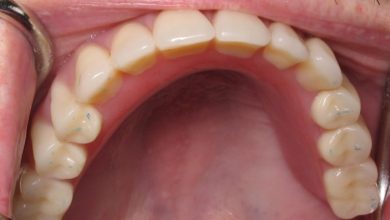
Tooth Fillings: What are the Different Types?
Over the years the need for fillings has decreased significantly as modern dental practices, such as water fluoridation and increasing awareness of dental and oral health, have made it a lot easier for people to take better care of their teeth. Unfortunately, some cavities still occur. The good news? There are different types of tooth fillings now available.
Tooth fillings can vary in terms of material and complexity. For example, there’s direct filling. As the name implies, it is placed “directly” in the cavity immediately on the same day. There’s also indirect fillings where an impression of the tooth is taken. From there, a custom filling is created to fit around it. This process will usually occur over 2 visits.
To treat a cavity, the dentist will get rid of the decayed portion of the tooth and fill the area where the decay once was. Tooth fillings are also used to repair broken or fractured teeth that have been damanged due to misuse.
Filling a Tooth: How It is Done
To fill a tooth, the dentist will numb the area around the tooth with local anesthetic. An abrasion instrument, drill, or laser will be used to remove the portion that is decayed. The dentist will then test or probe the area to assess that all the decay has been removed.
Once all the decay has been removed, the dentist will prepare the space by cleaning out any remaining cavity, debris, or bacteria. If the decay is near the pulp of the tooth, a liner may be placed first to protect the nerve.
The liner may be made of glass ionomer, calcium hydroxide or other materials. Then the filling will be placed over it. Finally, the dentist will polish the filling.
Different Types of Tooth Fillings
Amalgam
Amalgam fillings are considered a classic option. Amalgam fillings are made up of different types of metals. Typically, it is 50 percent mercury, with copper, tin, zinc, and silver mixed in. Compared to other types, amalgam has a few benefits. For instance, they are durable, long-lasting, and cost-effective.
Unfortunately, amalgam fillings have a few drawbacks as well. Since the color is silver, they tend to become darker with time. That means they are easier to notice each time you open your mouth. Also, while the FDA states the level of mercury in amalgam is safe for people over six years of age, many are still hesitant to use amalgam.
Composite
A composite tooth filling is usually made of a polymer matrix with glass, mineral or resin filler particles. The filling comes in different shades to match the patient’s teeth. Since people prefer a natural-looking smile, it’s no wonder many people prefer this option.
Composite fillings are bonded directly to the tooth making them stronger compared to amalgam filling. Composite filling is ideal as a small oe moderate-sized filling and is routinely used for aesthetic areas like the front teeth.
Porcelain
Porcelain fillings are an indirect filling and will require more than one visit to the dentist. Porcelain fillings also cost more compared to the previous two options. Porcelain can be made to appear like the natural teeth and is stronger than composite, so it’s usually preferred for teeth which require very large fillings and are also great for aesthetic areas.
Gold
Gold is considered one of the long-lasting and most durable options available. The ADA claims it can last for over two decades. Understandably, its durability comes with a hefty price tag as gold is considered one of the most expensive options available. Since gold is also considered an indirect filling, patients are required to spend more than one session to get one.
Glass Ionomer
Glass ionomer is typically used as a cement for inlay fillings. It is also used for fillings around the necks of the teeth and as temporary fillings. As a filling material, glass ionomer is used in patients with a lot of decay in the tooth part that extends below the gum.
It is also used as a liner for other types of fillings or as filling for baby teeth. When used on a permanent tooth, resin or glass ionomer is usually placed in a spot that’s not subject to chewing action or pressure because they tend to wear out much quicker.
With so many options out there, it can be confusing on which is the best one for you. Your dentist has undergone many years of training and education, and has the experience to diagnose your dental condition and advise on which of the fillings are the best to treat your dental condition.

